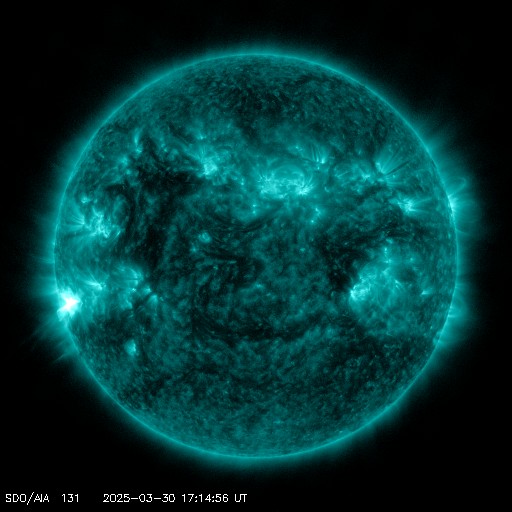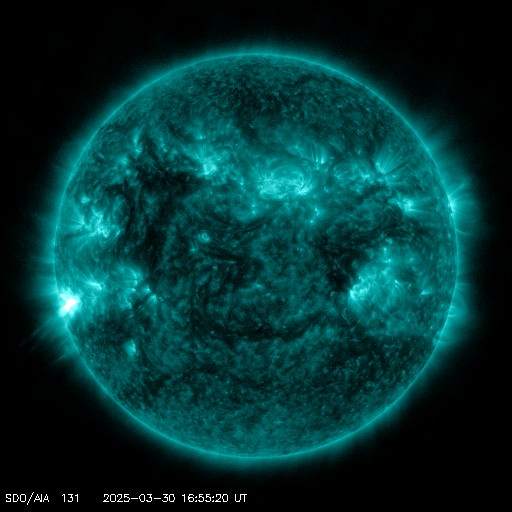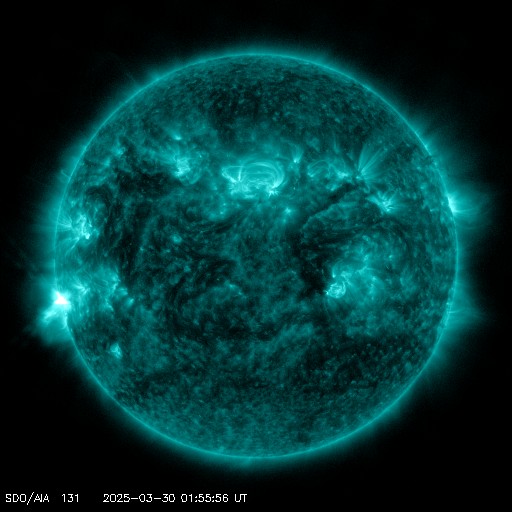Viewing archive of Thursday, 11 September 2014
Geophysical report
Any mentioned solar flare in this report has a scaling factor applied by the Space Weather Prediction Center (SWPC). Because of the SWPC scaling factor, solar flares are reported as 42% smaller than for the science quality data. The scaling factor has been removed from our archived solar flare data to reflect the true physical units.
Solar and Geophysical Activity Summary 2014 Sep 11 0245 UTCPrepared by the NOAA © SWPC and processed by SpaceWeatherLive.com
Joint USAF/NOAA Solar and Geophysical Activity Summary
SGAS Number 254 Issued at 0245Z on 11 Sep 2014 This report is compiled from data received at SWO on 10 SepA. Energetic Events
Begin Max End Rgn Loc Xray Op 245MHz 10cm Sweep 0000 0344 IV 0244 0244 0244 470 0512 0524 0532 2157 S16E05 C2.4 Sf 440 1217 1217 1217 100 1432 1434 1434 100 1721 1745 1820 2158 N14E02 X1.6 2b 3800 1300 IV 1826 1827 1901 2157 S17W01 Sf 720 330 1939 1945 2006 810 2105 2105 2107 340 2341 2350 2351 2158 N12E01 Sf IV
B. Proton Events
The greater than 10 MeV proton flux was
approaching the alert threshold at the close of this report. The
increase is in response to flare activity from Active Region 2158.
C. Geomagnetic Activity Summary
The geomagnetic field was quiet to
unsettled.
D. Stratwarm
Not available
E. Daily Indices: (real-time preliminary/estimated values)
10 cm 160 SSN 161 Afr/Ap 009/009 X-ray Background B7.6 Daily Proton Fluence (flux accumulation over 24 hrs) GT 1 MeV 3.7e+06 GT 10 MeV 1.1e+05 p/(cm2-ster-day) (GOES-13 satellite synchronous orbit W75 degrees) Daily Electron Fluence GT 2 MeV 6.80e+06 e/(cm2-ster-day) (GOES-13 satellite synchronous orbit W75 degrees) 3 Hour K-indices Boulder 2 0 1 1 3 4 3 4 Planetary 2 0 0 0 1 4 3 3
F. Comments
None
All times in UTC
Current data suggests there is a slight possibility for aurora to appear at the following high latitude regions in the near future
Murmansk, Norilsk, VorkutaLatest news
Latest forum messages
More topicsSupport SpaceWeatherLive.com!
A lot of people come to SpaceWeatherLive to follow the Sun's activity or if there is aurora to be seen, but with more traffic comes higher server costs. Consider a donation if you enjoy SpaceWeatherLive so we can keep the website online!

Latest alerts
17:27 UTC - Solar flare
Moderate M1.5 flare
17:03 UTC - Solar flare
Moderate M1.61 flare
16:45 UTC - Radio Blackout
Minor R1 radio blackout in progress (≥M1 - current: M1.61)
02:09 UTC - Solar flare
Moderate M1.54 flare from sunspot region 4048
01:42 UTC - Radio Blackout
Minor R1 radio blackout in progress (≥M1 - current: M1.24)
Space weather facts
| Last X-flare | 2025/03/28 | X1.1 |
| Last M-flare | 2025/03/30 | M1.4 |
| Last geomagnetic storm | 2025/03/27 | Kp5 (G1) |
| Spotless days | |
|---|---|
| Last spotless day | 2022/06/08 |
| Monthly mean Sunspot Number | |
|---|---|
| February 2025 | 154.6 +17.6 |
| March 2025 | 127.5 -27.1 |
| Last 30 days | 127.5 -24.7 |





